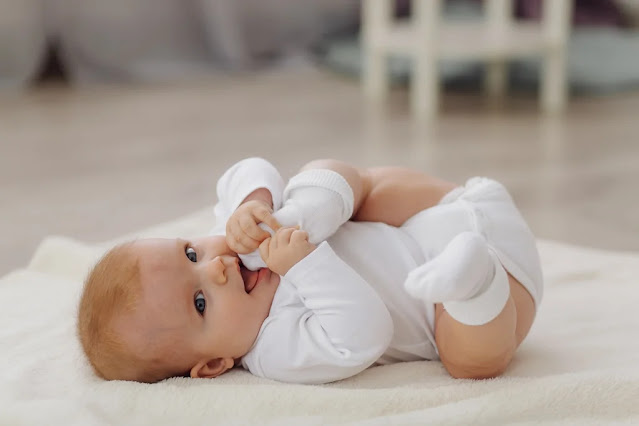Immediate Signs and Symptoms of Birth Injuries
Identifying a birth injury is by no regard an easy task. It also depends on the type of birth injury your child might have. Therefore, a child injury may not be apparent in many cases until months or even years later. A majority of these injuries and impairments result from malpractice and medical negligence.
A birth injury is usually divided into two categories based on the time of its appearance or development.

Immediate Signs and Symptoms of Birth Injuries
Immediate Signs of a Birth Injury
The symptoms that are immediately noticeable or that the parents and medical staff should look for just after the delivery are as follows:
- If the baby arches back when they cry.
- Difficulty sucking, eating, or swallowing (if it’s painful).
- Drooling to an excessive degree.
- Facial nerve injury, unable to choose face muscles.
- Hand curled into a claw-like shape and unable to open it or uncurl it.
- High-pitched crying and unable to stop, consistently grunting or fussing.
- Low levels of oxygen as well as low heart rate.
- Muscle stiffness or looseness.
- Seizures.
- Sensitivity to light.
- Fractures along with the skull.
- Poor or absent reflexes.
If your child presents or develops any of the above signs, these problems may be related to nerve or brain damage, such as Cerebral Palsy or Erb’s Palsy. In situations like these, especially where the family is unable to support the expenses that come along with their child's disability, there is no option left but to seek legal help. Birth Injury Justice Center offers parents support to victims of birth injuries and their families. They provide legal information and guidance to families with disabilities caused by physical birth injuries and help ease their difficulty.
Cerebral Palsy (CP) occurs due to a lack of oxygen during birth which causes damage to a child's brain. It affects a person's capacity to walk, move about, and maintain balance and stability. It is amongst the most common motor disabilities in children. Cerebral means about the brain. Palsy means weakness or inability to use muscles.
There are varying degrees of how severe it can be in every child. A person suffering from severe cerebral palsy may need specialized equipment to walk or may need lifelong care. On the other hand, someone with mild cerebral palsy may walk awkwardly but may not need much assistance.
Erb’s palsy results from pulling motion on the baby's shoulders or feet during birth or if their head and neck pull to the side while moving through the birth canal. These pulling motions can cause irreparable damage.
Some cases of Erb’s Palsy can resolve on their own. Others respond so well to early treatment that their shoulder and arm usually move. However, if someone with Erb’s palsy is unable to recover early on or does not get the correction surgery, they may be able to use their shoulders or neck properly for the rest of their lives.
Symptoms to Look For at 12-24 Months Old
Symptoms of birth injuries may become apparent after 1 to 2 years. Childbirth injury usually becomes more obvious when children begin to miss important milestones, like verbal speech or show physical signs of inability. Symptoms that may occur in children aging from 12-24 months include:
- Vision and/or hearing problems.
- Delays in verbal speech or no speech development.
- Difficulty eating, drinking, grasping utensils, or using cups.
- Unable to walk or crawl properly.
- Intellectual disabilities, like failure to retain memory.
- Involuntary pulling of the neck.
- Muscle spasms (spasticity) and lack or lack of muscle control or any proper body movement (ataxia).
- Not bringing objects to the mouth or being unable to do so.
- Not responsive to sound or loud noise.
- Poor coordination of the limbs.
- Incapable to sit, stand, crawl, or step without aid.
If you think your child is showcasing any of the above signs or symptoms, they may have sustained an injury at birth. You should contact your doctor immediately to minimize the damage or prevent further deterioration.
Signs to Look For After 24 Months
Though this is slightly less common, some injuries don’t reveal themselves until after the first two years of a child’s life. They may appear close to the time when a kid enters kindergarten or primary school and begins to exhibit physical and/or learning disabilities when compared with their peers. They include:
- Blindness, deafness, or muteness.
- Unable to dress, eat, or drink properly.
- Not able to run freely.
- Cannot climb or descend stairs without help.
- Muscle stiffness or looseness.
- The onset of autism or epilepsy may occur.
- Difficulties with fine motor skillfulness due to irregular reflexes.
- Body experiencing tremors or shakiness.
- Unable to draw properly and hold utensils.
Final Words
Contact a doctor immediately to address the issue if you observe any of the above signs in the respective age group. Similarly, you should contact trustworthy lawyers to handle your case if you believe that your child is suffering a birth injury due to medical negligence.

No comments